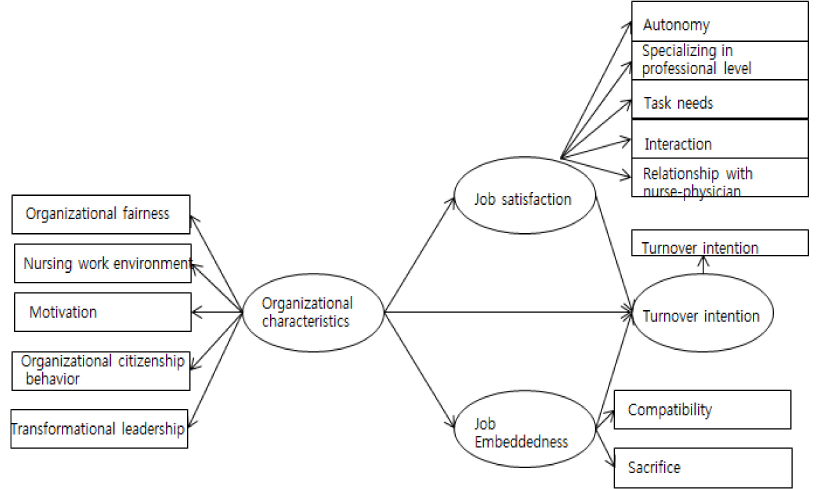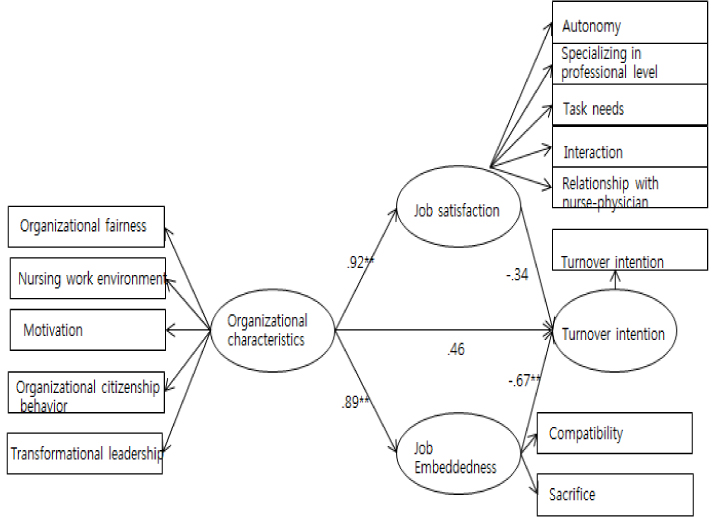1Dankook University Hospital, Korea.
2College of Nursing, Dankook University, Korea.
Copyright © 2016 Korean Academy of Nursing Administration
This is an open access article distributed under the terms of the Creative Commons Attribution Non-Commercial License (http://creativecommons.org/licenses/by-nc/3.0/), which permits unrestricted non-commercial use, distribution, and reproduction in any medium, provided the original work is properly cited.



**p<.01; 1. Organizational fairness; 2. Nursing work environment; 3. Motivation; 4. Organizational citizenship behavior; 5. Transformational leadership; 6. Autonomy; 7. Specializing in professional level; 8. Task needs; 9. Interaction; 10. Relationship with the nurse-physician; 11. Compatibility; 12. Sacrifice; 13. Turnover intention.
**p<.01, ***p<.001.
**
**